How to keep a Christmas tree alive: tips for caring for a real tree indoors
Our advice on how to keep a Christmas tree alive will make sure your festive decor still looks beautiful for the big day
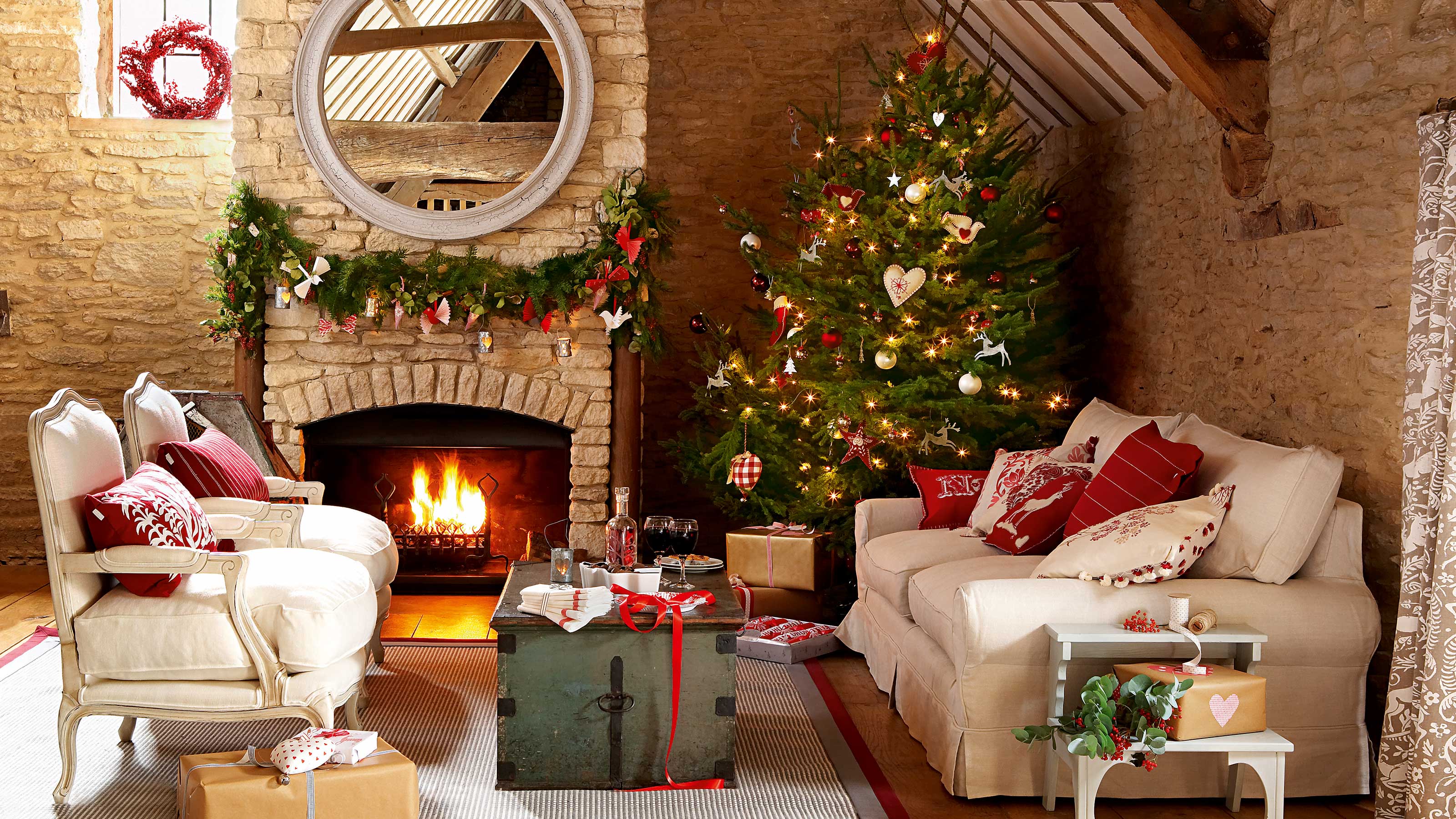

Need some top tips on how to keep a Christmas tree alive to ensure yours stays fabulous and fresh throughout the festive season? A real tree is a wonderful focal point for your decorating scheme. But, opting for one of these, rather than the artificial kind, does bring with it a few care requirements if it's to last.
The good news is that most types of Christmas tree should last four weeks or more once cut, according to the British Christmas Tree Growers Association (BCTGA). All it takes is a bit of know-how – we've put together all the information you need.
6 top tips on how to keep a Christmas tree alive and looking beautiful
With these tips, you can ensure your indoor decorations look just as good as your outdoor Christmas decor ideas, for a joyful, festive home.
1. Avoid buying your tree too early
As well as knowing how to care for a real Christmas tree, it's worth keeping in mind the best date for when to buy a real Christmas tree too. 'After Bonfire night, your first instinct might be to get into the Christmas spirit and purchase a tree,' says gardening expert Samantha Jones from MyJobQuote. 'However, the earlier you get a real Christmas tree, the more effort is required to keep it looking fresh in time for the 25th of December.
'Generally, you should aim to buy your Christmas tree a week into December, so it doesn't dry out throughout the festive season. For low-drop trees like Nordman firs, you can purchase them up to four weeks before Christmas, but for European spruce trees, get them mid-December as they tend to dry up faster.'
This applies if you're going for fresh-foliage Christmas wreath ideas for your home, too – avoid buying (or making) one too early if you want it looking its best on the big day.

A real Christmas tree is a beautiful addition to festive decor
2. Transport your tree home safely
'After spending money on a real Christmas tree, it would be a shame if it got damaged on the journey home,' says Samantha Jones. 'Most Christmas trees are transported home via the top of a vehicle, but unfortunately, this can leave your Christmas tree exposed to harsh winds when driving, which can dry the tree out.
'Trees often come wrapped in netting, which allows for some protection and easier transportation. However, if you can, wrap the tree in an old blanket before securing it onto a roof rack – this will offer the best protection.'

Secure your tree to the top of your car, wrapped in a blanket if possible
3. Trim the trunk and stand it in water
When you've brought the tree home (or had it delivered), take off the net. The supplier may have cut a little from the base of the trunk when you chose your tree. But, if this hasn't been done, you can use your best hand saw to cut 2.5cm (around an inch) off to allow the tree to take in more water.
Stand it in a bucket of water until you are ready to bring it into the house and decorate it.
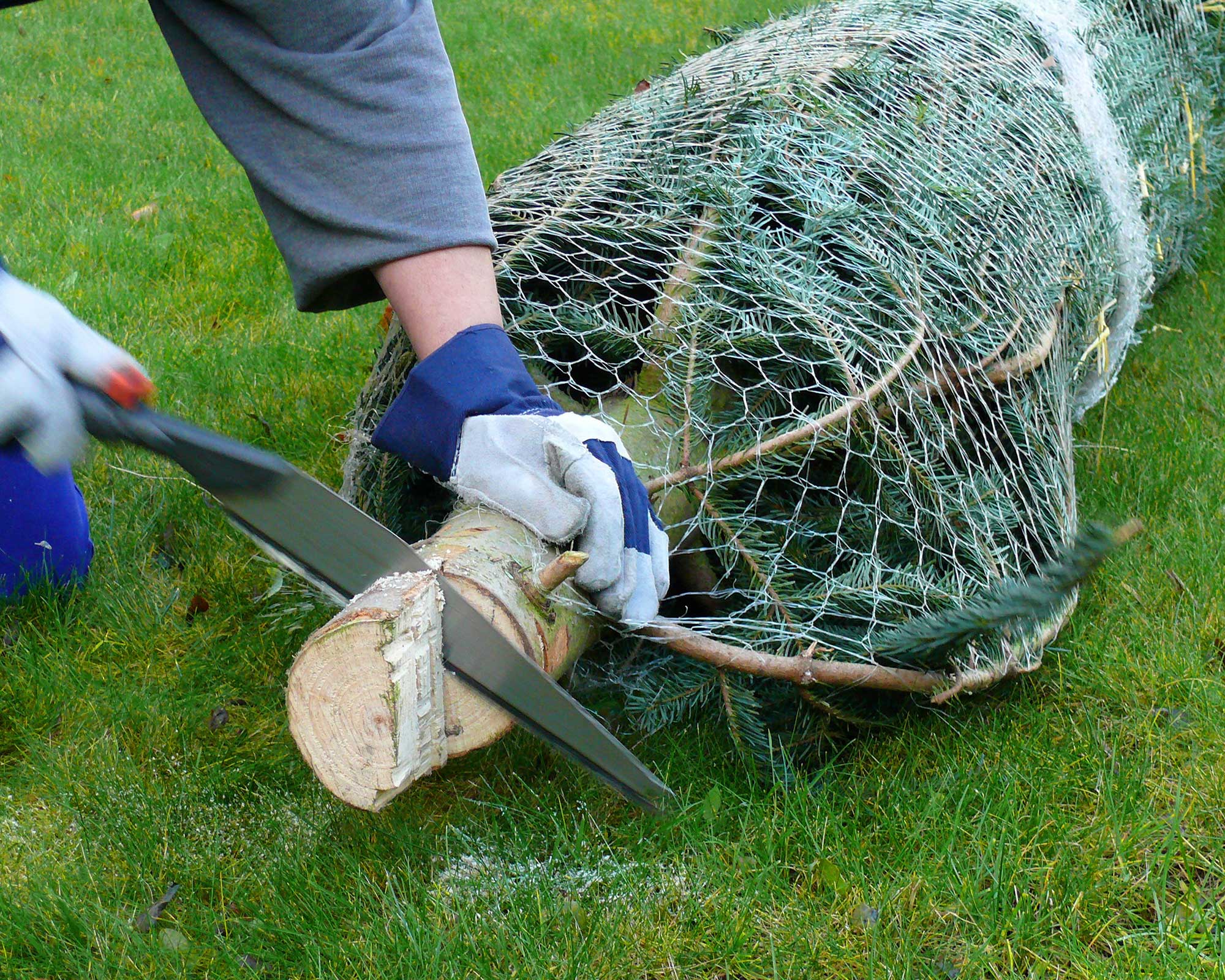
Carefully saw off the bottom of your tree's trunk
4. Keep it cool
It's best to position your tree away from radiators or other heat sources once it's in your home.
Got underfloor heating? The British Christmas Tree Growers Association suggests turning that zone off while the tree's in place or, if that's not possible, putting the tree on a mat.
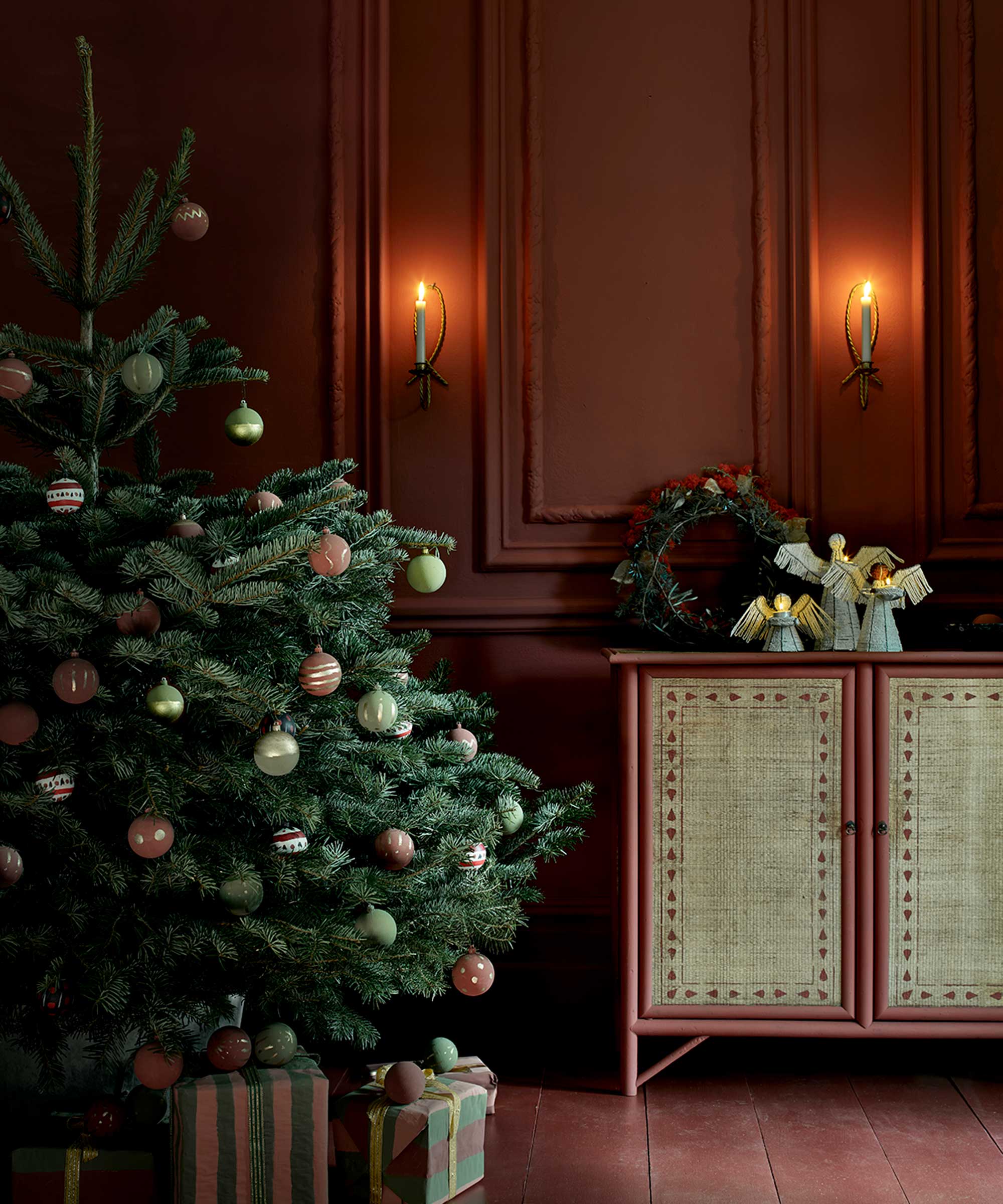
This Christmas tree looks beautiful against its backdrop, which is decorated with Annie Sloan paint
5. Provide plenty of water
Watering plants is always crucial, and that also applies when learning how to keep a Christmas tree alive. Using a Christmas tree stand that holds water makes this job easy.
Daily, 'your tree should drink one liter of water per 3cm (1.2in) of the stem diameter,' reveals Christmas tree expert Mary Dimitrova from Fantastic Services. 'That means a fresh cut tree can consume 4–5 liters in 24 hours. Watering is critical, especially for Norway Spruce trees. Check the water levels daily and never let it go below the tree's base.
'Without water to the tree's base, it will dry out just in 7–8 days. The temperature of the water is not that important and no, you can't overwater your tree, it will absorb only as much as it wants.'
If you've opted for a pot-grown rather than cut Christmas tree, water the root ball and make sure you keep the soil moist at all times. A pot-grown tree is best kept inside for a minimum amount of time. The RHS suggests bringing one of these indoors the weekend before Christmas. Our guide on how to grow your own Christmas tree has more advice.
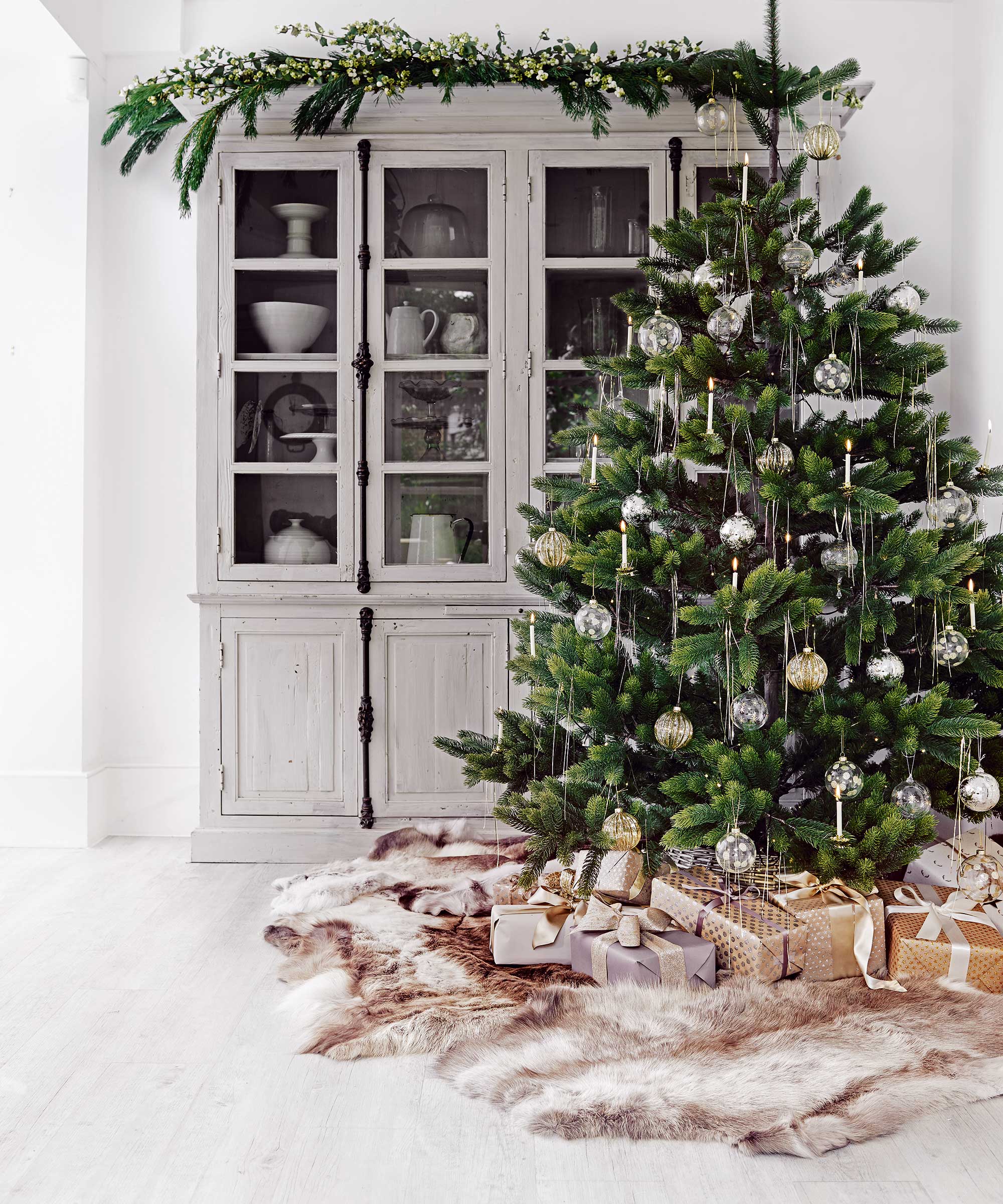
Keep your tree hydrated
6. Watch out for dropped needles
'A floor covered in dropped needles is never a good sign, as they signal the tree's decay,' says gardening expert Samantha Jones from MyJobQuote.
'Other signs to look out for include dried brittle branches or a lack of smell (unless it is a Nordmann fir, which doesn't have a distinctive scent).
'If you notice any of these, check the water levels of your reservoir immediately,' she says.
You can also experiment with adding tree-preserving solutions (try Amazon), but Samantha advises that clean and fresh water is best.
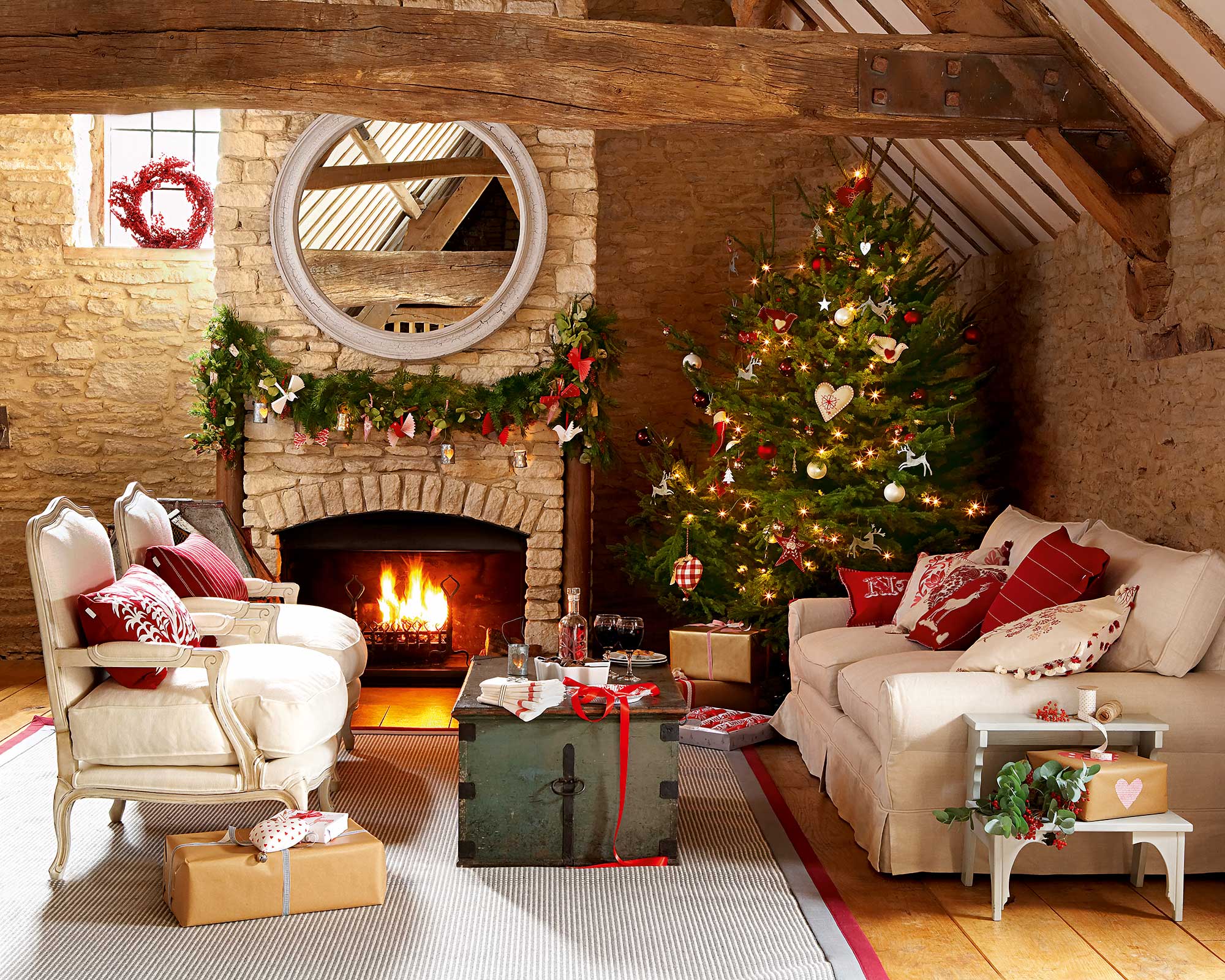
Watch out for needle dropping – a telltale sign that your tree is drying out
What types of Christmas trees last the longest indoors?
According to Mary Dimitrova from Fantastic Services, 'a Douglas or a Nordmann fir are the best options – they'll last for about six weeks before withering, offering the best use throughout Christmas.
'Of course, that depends on how well you care for it, but lowering the temperature in the room really slows down the drying process and keeps your tree fresher for longer.'
Whether you want to buy or rent a Christmas tree this year, there are a few other things to look out for. 'A healthy tree should have bright and shiny needles,' Mary continues, 'not dry and dull. If you notice any gray sections, that's a sign of dehydration, which means that the tree is not that fresh. If the tree is fresh, the needles should not break easily and it should be hard to pull them off.
A trunk that's sticky with sap residue is also a good sign. 'Also, the tree should be heavy, which means the tree is freshly cut and still contains all the water,' she adds.
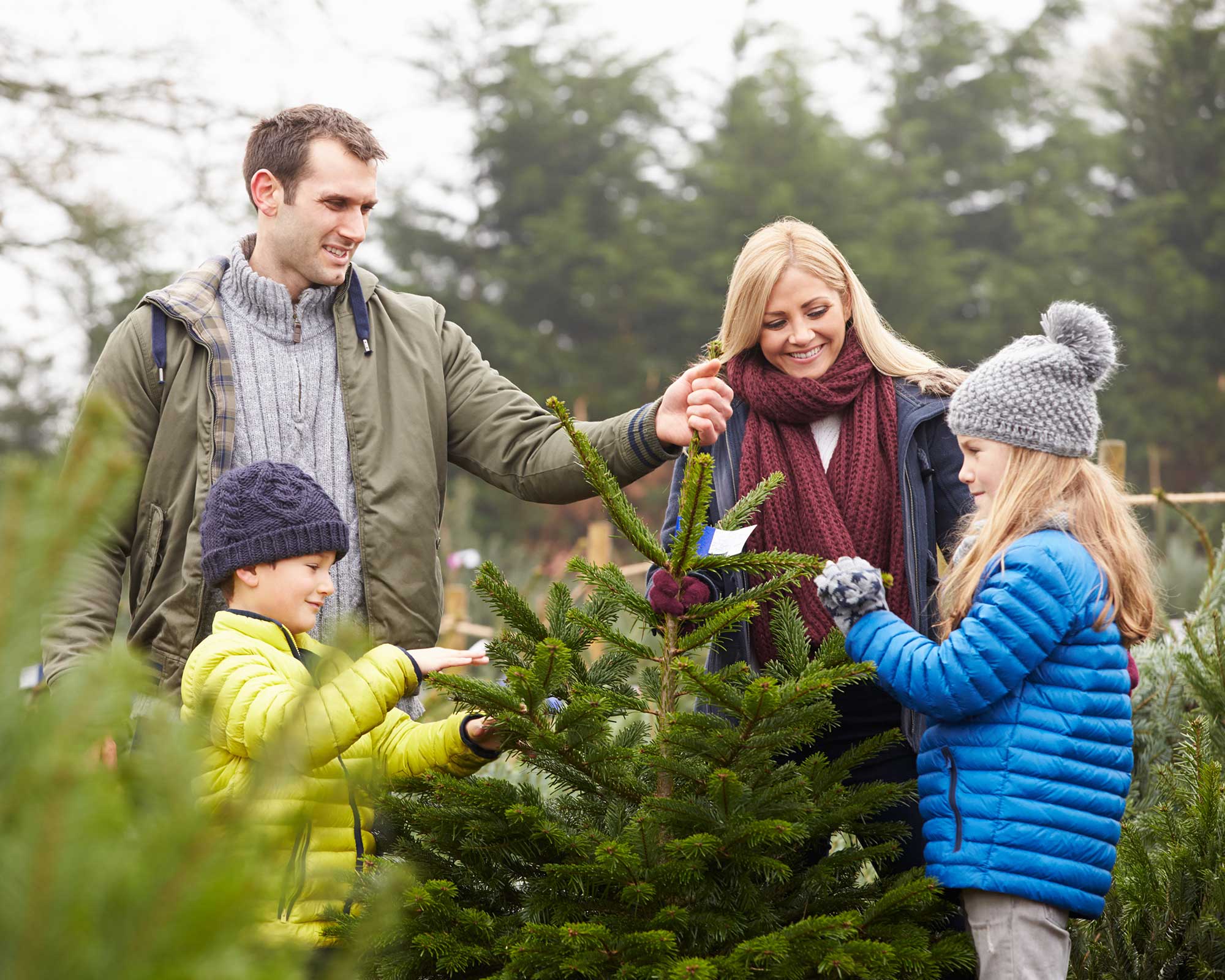
Choose your tree carefully to ensure the longest-lasting results
How can you revive a dead Christmas tree?
A completely dead and dry cut Christmas tree can't be revived, but if your tree has only just started to fade, there are a few things you can do to give it a boost.
'You can try to give your tree a good trim which will reduce the number of water-requiring branches,' suggests Mary. Our buying guide to the best secateurs might come in handy if you need a new tool for the job. 'Keep the room as cool as possible and move your tree to the darkest spot of the room,' she adds.
Some homeowners also suggest re-trimming the trunk by an inch or so, and providing plenty of fresh water.

Sarah is a freelance journalist and editor writing for websites, national newspapers, and magazines. She’s spent most of her journalistic career specialising in homes and gardens and loves investigating the benefits, costs and practicalities of home improvement. It's no big surprise that she likes to put what she writes about into practice, and is a serial house revamper.
